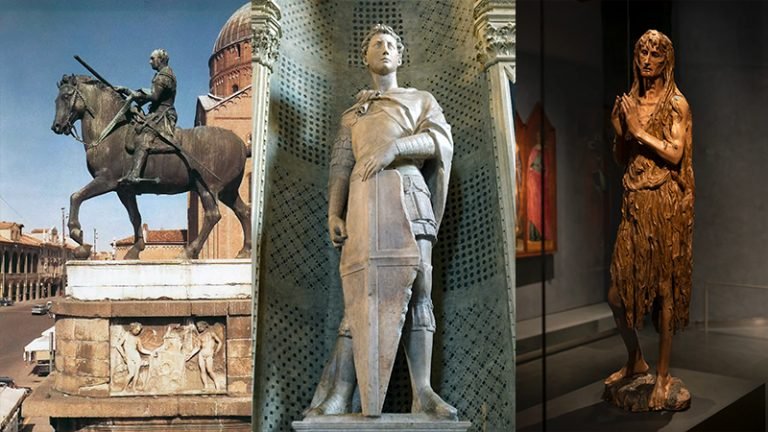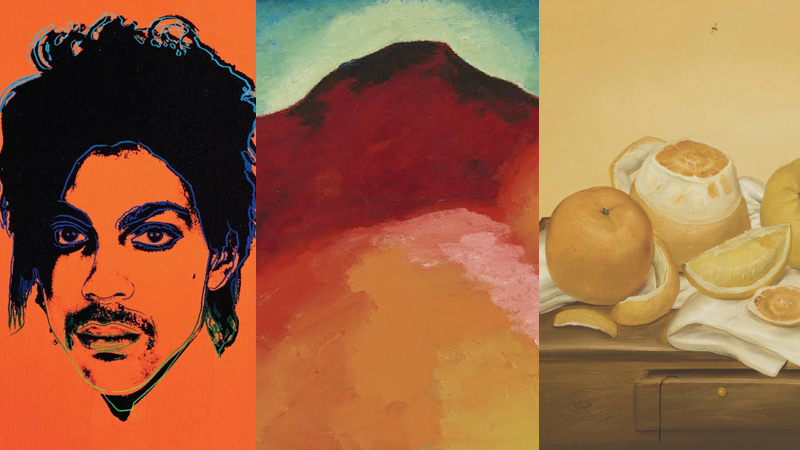
Orange is a color that radiates warmth and energy, often evoking a spectrum of emotions from joy to caution. Throughout art history, this hue has captured the imaginations of artists, transforming canvases into dynamic expressions of life and introspection.
From Henri Matisse’s intimate explorations to Mark Rothko’s meditative color fields, orange plays a crucial role in shaping the viewer’s experience.
In this article, we’ll delve into ten famous paintings where orange takes center stage. Each artwork not only showcases the versatility of this bold color but also invites contemplation on the themes and emotions that emerge from their palettes.
Join us as we explore how these masterpieces leverage the power of orange to create lasting impressions in the world of art.
1. Apples and Oranges – Paul Cézanne
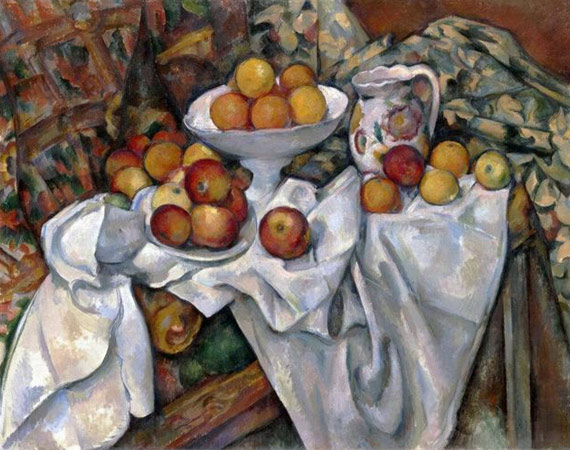
Cézanne’s “Apples and Oranges” showcases his mastery of color and form. Painted with hues of orange, yellow, and green, the fruits appear almost abstract, simplified into basic shapes.
Cézanne’s unique brushwork and bold palette create an intriguing depth, inviting viewers to explore the texture of each fruit against the warm reddish-brown table.
This iconic still life is a significant milestone in the evolution of modern art, influencing generations of artists with its innovative approach to composition and color.
2. Still Life with Basket and Six Oranges – Vincent van Gogh
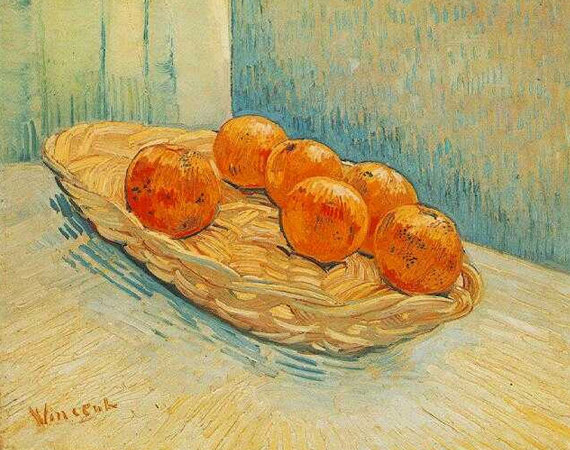
Vincent van Gogh’s “Still Life with Basket and Six Oranges,” completed in 1888, stands as an iconic symbol of his artistic exploration.
The painting features six oranges arranged in a simple wooden basket atop a plain table. Van Gogh’s bold use of color and distinctive brushwork creates a rich texture and depth, while his simplified shapes evoke a sense of abstraction, influencing countless artists.
This work exemplifies his mastery in capturing light and form, making ordinary subjects feel extraordinary.
3. Orange and Yellow – Mark Rothko
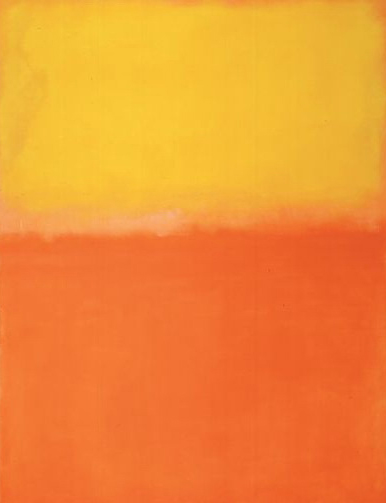
Rothko’s “Orange and Yellow,” created in the 1950s, epitomizes his iconic color field style. The painting features two large rectangles: a orange at the bottom and a deep yellow at the top.
Rothko’s technique involved layering thin paint to achieve a soft gradient, blending the colors seamlessly.
This deliberate contrast elicits a spiritual response, inviting viewers to contemplate energy and vitality, while the overall simplicity enhances its emotional power.
4. Orange Prince – Andy Warhol
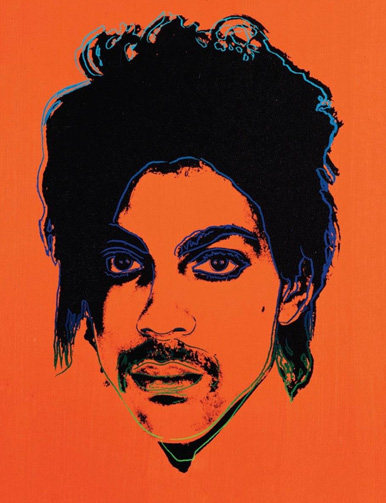
Andy Warhol’s “Orange Prince,” created in 1984, is a striking silkscreen portrait that captures the essence of the iconic musician Prince.
This piece stands out within Warhol’s series of twelve portraits, each distinguished by unique color schemes. The orange hue not only references Warhol’s previous celebrity portraits but also channels a sense of energy and allure.
As a significant late work, it embodies themes of fame and identity, bridging Warhol’s historical influences with contemporary pop culture.
5. Three Studies for Figures at the Base of a Crucifixion – Francis Bacon
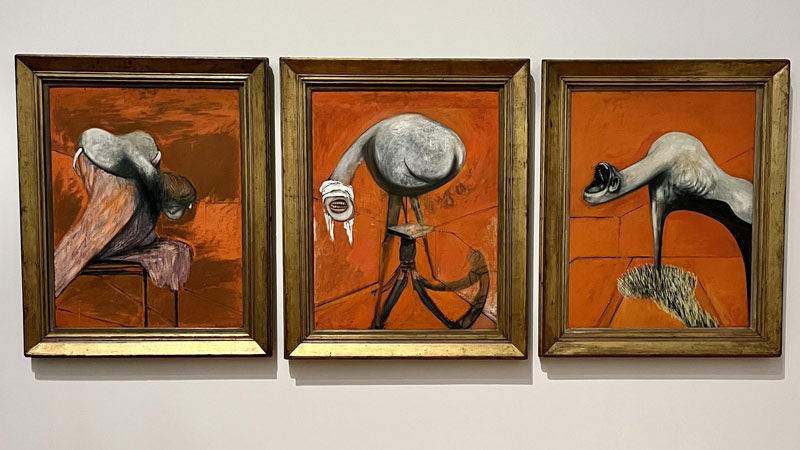
Francis Bacon’s “Three Studies for Figures at the Base of a Crucifixion,” completed in 1944, showcases a striking burnt orange background that amplifies the emotional intensity.
The triptych features three distorted humanoids, inspired by the Eumenides from Aeschylus’s Oresteia.
Through his innovative use of oil paint and pastel on Sundeala fiber board, Bacon encapsulates themes of suffering and anguish while drawing from his research on Picasso’s biomorphs and the Crucifixion concept.
6. No 22 Special – Georgia O’Keeffe
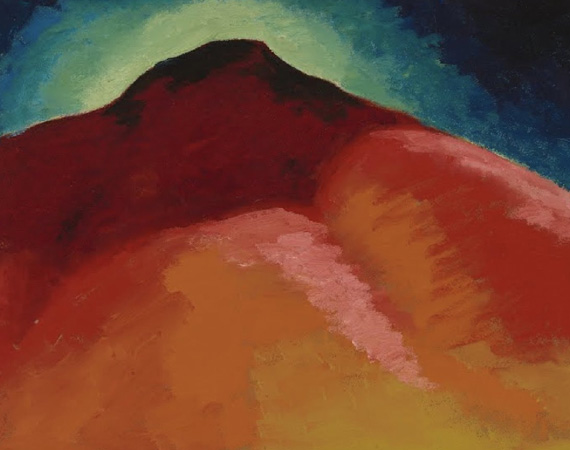
No 22 Special, created in 1928, showcases orange shapes arranged in an abstract composition. O’Keeffe’s bold use of color evokes warmth and energy, symbolizing a spiritual journey.
The angular, geometric forms suggest movement and complexity, while her meticulous attention to detail enhances depth.
This masterpiece exemplifies her exploration of abstraction, inviting viewers to engage in their own path of self-discovery and transformation.
7. Midsummer – Albert Joseph Moore
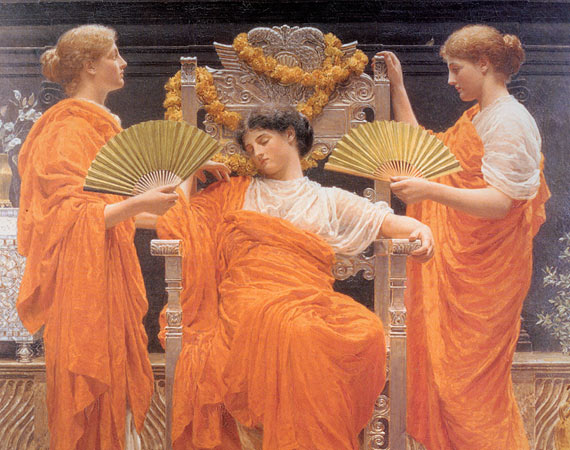
“Midsummer,” painted in 1887 by Albert Joseph Moore, features a dreamlike garden filled with hues of orange, pink, and yellow.
The composition includes three women in elegant flowing gowns, embodying grace and tranquility. Moore’s meticulous attention to detail is evident in the intricate floral patterns on their dresses and the lush greenery surrounding them.
This rich use of color creates an ethereal atmosphere, inviting viewers to experience a magical midsummer day, illustrating Moore’s mastery of color and form.
8. Love and Pain – Edvard Munch
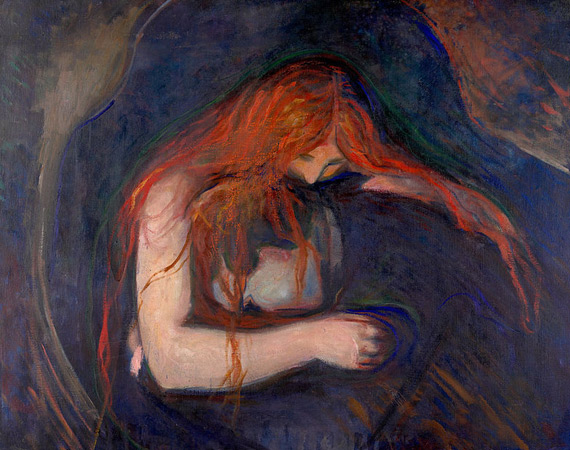
Munch’s “Love and Pain,” completed in 1893, showcases his distinct use of orange hues to evoke intense emotion.
The painting depicts a woman with her head tilted back, biting into a man’s neck, highlighting themes of desire and anguish.
Oranges, yellows, and reds create a sense of tension, while Munch’s flowing lines and composition amplify the drama.
This haunting artwork exemplifies the duality of love and suffering, making it a pivotal piece in his exploration of psychological themes.
9. Oranges – Fernando Botero
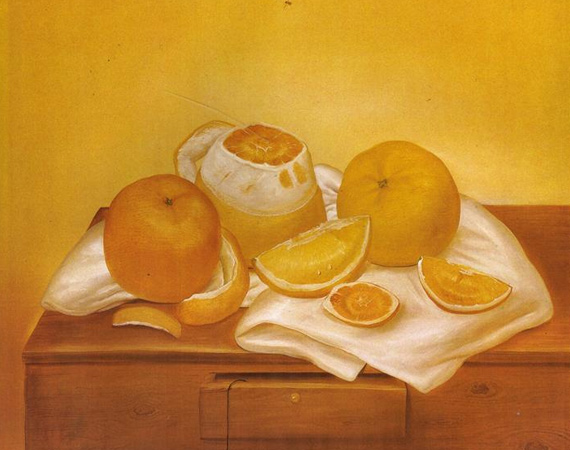
“Oranges,” painted by Fernando Botero in 1978, presents a vivid arrangement of oranges on a wooden table.
The bold orange tones convey warmth and simplicity, epitomizing Botero’s distinctive style. It reflects his exploration of everyday life through humor and irony.
The composition, though minimal, captures the viewer’s attention with its rich color and form, showcasing Botero’s ability to transform the mundane into something visually striking and memorable.
10. Flaming June – Frederic Leighton
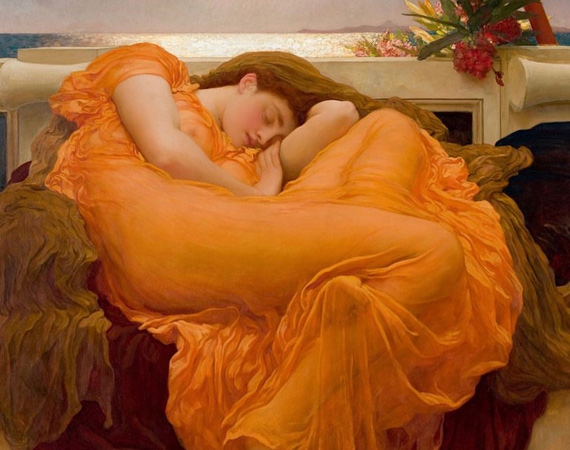
Flaming June, painted by Frederic Leighton in 1895, showcases a woman draped in a orange dress. The striking hue embodies warmth and passion, capturing the viewer’s attention.
The figure reclines peacefully, symbolizing tranquility and beauty. The use of light emphasizes the flowing fabric, enhancing the overall ethereal quality of the piece.
This iconic artwork is often celebrated as a quintessential example of Victorian painting, illustrating the allure of the color orange in artistic expression.


